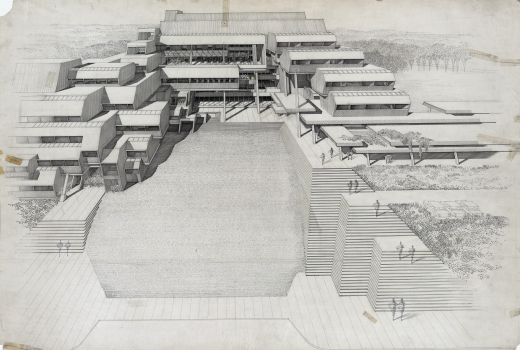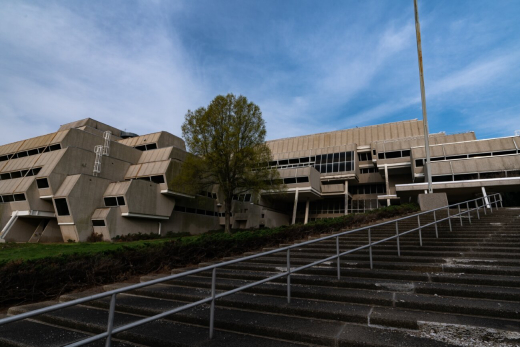Update January 21, 2021
Despite an outpouring of support from the architectural and preservation communities, United Therapeutics went through with its plans to demolish Burroughs Wellcome, arguably one of Paul Rudolph's most significant projects that was still intact. Devastating photos circulated on Twitter of the building's exposed cross section. Despite the company's argument that asbestos mitigation would make the building too difficult to restore, there appeared to be little to no concern or care taken for this during demolition. In a recent piece from The News & Observer, United Therapeutics claims they will "memorialize the legacies of Elion, Hitchings and Rudolph in whatever new building goes on the site... The new building also will be named for Elion and Hitchings, and there will be a Paul Rudolph Foyer inside."
Gut-wrenching photos of Paul Rudolph's 1972 Burroughs-Wellcome building coming down. https://t.co/k90TpnPyZs pic.twitter.com/tZBmRj9d6t
— John Hill (@archidose) January 18, 2021
Docomomo US Executive Director Liz Waytkus explained to The Architect's Newspaper that the building was lost in part "because people thought it was a landmark when in reality it had no protection and sat vacant for years." Advocates did not find out about the demolition permit until after its approval, at which point there is usually little that can be done. The Paul Rudolph Heritage Foundation issued a rallying cry for lessons learned and ways people as individuals and groups can make a difference in future efforts to preserve modern sites.
In this spirit, Docomomo US has launched The Advocacy Fund. Gifts to the fund will go directly to critical advocacy efforts and will support local and national work. With your support Docomomo US can provide assistance to local advocates and campaigns, participate in local and national preservation review meetings including the Section 106 process, and to continue to speak out on the issues that concern you the most.





